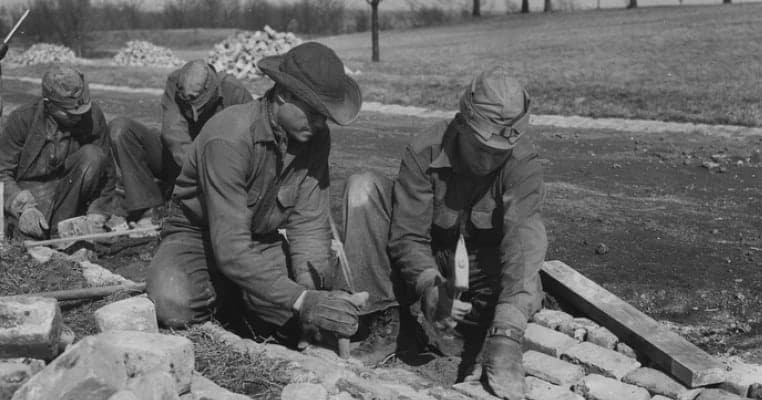The period of economic downturn known as the Great Depression began when the New York Stock Exchange began to drop in early September, 1929. The following month it collapsed dramatically on October 29, a date remembered as Black Tuesday. As the economy of the United States tanked, it took the rest of the world’s economy down with it, and a global depression set in which lasted well into the 1930s. In some nations’ the depression remained in effect until the global catastrophe of the Second World War. Manufacturing came to a near standstill, creating long lines of unemployed workers in cities. Crop prices dropped by 60% in some places, and farmers were unable to make payments on their crop loans and mortgages.

The weather and decades of poor land management and irrigation led to drought conditions which stripped the topsoil from the Great Plains, creating the dust bowl which led to many abandoning their farms and ranches. Banks failed, the result of poor investments and the inability to collect outstanding loans, wiping out the savings of their customers. During the first three years of the downturn, global gross domestic product fell by 15% or more. In Europe the economic collapse helped feed the growth of fascism and Nazism, in the United States the communist party grew in strength. While economists continue to debate the cause of the Great Depression as well as when it really started, there is no debate over its impact on American society. Its impact is still felt in the United States, and many of the institutions created to fight it remain in place.
Here are some examples of the efforts within the United States to combat the effects of the Great Depression during the 1920s and 1930s.

1. The Tariff Act of 1930 worsened the global depression
The congressional legislation known as the Smoot-Hawley Tariff Act was a protectionist increase in tariffs on more than 20,000 imported goods, intended to protect American manufacturing jobs and farmers. President Hoover had promised an increase on tariffs on farm goods during his campaign in 1928, and when he presented the request to Congress it included a reduction of tariffs on manufactured goods. Congress responded by increasing both and despite the pleas of industrialists such as Henry Ford, who called them “economic stupidity” and leading financiers who referred to them as “asinine”, among other things Hoover signed the legislation into law. Over 1,000 economists and bankers petitioned the President to veto the legislation, their requests falling on deaf ears. Hoover himself called the bill “extortionate” but yielded to political pressure from his own party, which controlled both houses of Congress.
The international response to the tariffs by America’s trading partners was an increase in tariffs of their own, and Canada, France, and the British Empire forged closer trading ties with each other, abandoning much of their trade with the United States. Both American farmers and industrial workers suffered from the loss of markets for their products. US imports decreased by more than 65%, exports dropped from $5.4 billion in 1929 to $2.1 billion in 1933, though at first the tariffs helped feed a spike in manufacturing and payrolls. It was short-lived. The Smoot-Hawley Tariff Act helped worsen the depression and both Senators lost their seats in the 1932 election, as did the President. Unemployment, which was at roughly 8% in 1930, jumped to 25% by 1932, one of the worst years of the depression. Smoot-Hawley did not cause the depression, but the consensus view of economists seventy years later is that it made it much worse.

